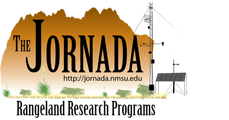The National Wind Erosion Research Network: Building a standardized long-term data resource for aeolian research, modeling and land management [1]
| Title | The National Wind Erosion Research Network: Building a standardized long-term data resource for aeolian research, modeling and land management |
| Publication Type | Journal Article |
| Year of Publication | 2016 |
| Authors | Webb, N [2], Herrick, J [3], Van Zee, J [4], Courtright, E [5], Hugenholtz, C [6], Zobeck, TM [7], Okin, GS [8], Barchyn, TE [9], Billings, BJ [10], Boyd, R [11], Clingan, S [12], Cooper, B [13], Duniway, MC [14], Derner, JD [15], Fox, FA [16], Havstad, KM [17], Heilman, P [18], LaPlante, V [19], Ludwig, NA [20], Metz, LJ [21], Nearing, MA [22], M. Norfleet, L [23], Pierson, FB [24], Sanderson, MA [25], Sharratt, BS [26], Steiner, JL [27], Tatarko, J [28], Tedela, NH [29], Toledo, D [30], Unnasch, RS [31], R. Van Pelt, S [32], Wagner, L [33] |
| Journal | Aeolian Research |
| Volume | 22 |
| Pagination | 23-36 |
| Date Published | 09/2016 |
| Keywords | Wind erosion; Aeolian; Dust emission; Monitoring; Network; Long-Term Agroecosystem Research [34] |
| Abstract | The National Wind Erosion Research Network was established in 2014 as a collaborative effort led by the United States Department of Agriculture’s Agricultural Research Service and Natural Resources Conservation Service, and the United States Department of the Interior’s Bureau of Land Management, to address the need for a long-term research program to meet critical challenges in wind erosion research and management in the United States. The Network has three aims: (1) provide data to support understanding of basic aeolian processes across land use types, land cover types, and management practices, (2) support development and application of models to assess wind erosion and dust emission and their impacts on human and environmental systems, and (3) encourage collaboration among the aeolian research community and resource managers for the transfer of wind erosion technologies. The Network currently consists of thirteen intensively instrumented sites providing measurements of aeolian sediment transport rates, meteorological conditions, and soil and vegetation properties that influence wind erosion. Network sites are located across rangelands, croplands, and deserts of the western US. In support of Network activities, http://winderosionnetwork.org [35] was developed as a portal for information about the Network, providing site descriptions, measurement protocols, and data visualization tools to facilitate collaboration with scientists and managers interested in the Network and accessing Network products. The Network provides a mechanism for engaging national and international partners in a wind erosion research program that addresses the need for improved understanding and prediction of aeolian processes across complex and diverse land use types and management practices. |
| DOI | 10.1016/j.aeolia.2016.05.005 [36] |








